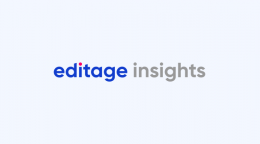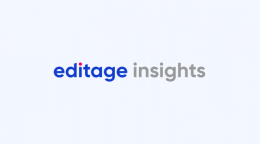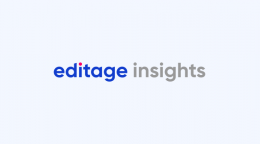Conquering plagiarism in nursing research and authorship

[This post was created for the Wolters-Kluwer author newsletter Author Resource Review and has been reproduced with permission. It is written by Linda S. Smith, PhD, MS, RN, CLNC, Vice President for Research, Data Design, Inc.; Nurse Educator-Adjunct Faculty, Ozarka College; and Editorial Board Member, Nursing2018]
While completing coursework toward his PhD in nursing, Luke wrote a well-designed concept analysis on vaccine misconceptions he would later use for his dissertation. Luke’s concept analysis was published in a peer-reviewed nursing journal.
Following graduation, Luke plans to write a research-based manuscript for a nursing journal. He knows the research report needs to include information from his previously published concept analysis, but he’s not quite sure of the ethical and legal processes he needs to follow to avoid self-plagiarism. “Do I need permission to use my own material?” Luke wonders.
He’s wise to ask. This article discusses plagiarism and self-plagiarism in publishing and research settings and examines why it’s a professional nursing concern.
Literary plagiarism
Plagiarism is the appropriation of someone else’s intellectual property without permission or attribution.1 Plagiarism is, at its core, a dishonest, unethical, and misleading representation of one’s work.
Literary plagiarism occurs when editors and readers are falsely led to believe the piece they’re reading is the author’s own original and unique work. In addition to text plagiarism, types of literary plagiarism include self-plagiarism, “salami slicing” or data fragmentation, and inappropriate or dishonest authorship designation. Plagiarism, whether in a research report, journal manuscript, grant proposal, or term paper, violates the trust between reader and author. If words or ideas have been borrowed from others (or even from an author’s own previous work), the reader assumes that an ethical author will disclose that information.2
Unfortunately, research and literary plagiarism are a growing concern. Using reports from the United States Office of Research Integrity and other sources, Fang and colleagues performed a search of the PubMed database that identified 2,047 retracted published articles since 1977. These investigators found that 14.2% of these were retracted due to duplicate publication, and 9.8% were retracted due to plagiarism.3
A professional concern
Evidence-based practice guides nursing decision-making, education, practice, and ongoing research. To further those efforts, published nursing evidence must be trustworthy. Plagiarism undermines future nursing research and diminishes available funding because new projects build on previous scientific investigation and subsidies depend on researcher integrity.1,2
Most important, patients expect the care nurses provide to be based on reliable evidence. Good care outcomes depend on quality evidence.4
Types of literary plagiarism
Self-plagiarism. From grade school on, we learn that plagiarism refers to the dishonest and inappropriate use of someone else’s ideas and words. The notion that plagiarism also includes the redundant and dishonest use of one’s own work may be a more difficult concept to grasp. Authors who repeat, reuse, and/or recycle their own previously published information without informing editors prior to publication commit self-plagiarism.5 In a few instances, such as open access publishing, authors may retain the copyright to their work. However, the publisher of most published works retains ownership and copyright as part of the publication process.
Authors who self-plagiarize distort scientific validity by creating multiple references for the same data or project.6 For example, if a nurse researcher establishes treatment efficacy with a study that includes 100 participants and then recycles the same information in additional publications, the findings for that single study may be falsely exaggerated.6
Furthermore, many reputable publications are fiercely competitive; journal space is expensive and precious.2 Self-plagiarism robs readers of valuable information and other authors of publication opportunities. Editorial staff and external peer reviewers have wasted time and resources on a paper that’s neither original nor unique.2 Unfortunately, different titles, author names, and/or abstracts can mask redundancy and self-plagiarism and make it seem that the results of a given study were replicated and verified.7
The converse could also be true. One adverse finding published multiple times could seem an overwhelming obstacle for a nursing intervention that could help patients.
Salami slicing. Data fragmentation in research writing is sometimes called salami slicing. Just as a cook would thinly slice a salami for multiple servings, some researchers thinly slice up their research to achieve multiple publications and reports. This technique divides study results into subcategories.
Data fragmentation confuses readers who encounter several overly simplified reports on the same topic.8 If a study is best presented as one published, complex work, salami slicing distorts the findings and confuses the scientific community. For example, if the results of a multiphase study are published phase-by-phase instead of all together, readers could miss out on crucial insights and a comprehensive view of the endeavor.8
Guest authoring. This occurs when authors are listed and/or recognized in a publication based on courtesy or status without the requisite work. Most publishers, organizations, and professional societies have very specific guidelines for authorship designation. For example, members of the American Psychological Association may take responsibility and credit only for work they’ve performed or to which they substantially contributed. That is, being a dean or the director of a department or organization doesn’t qualify him or her for author status.9
Authors should be listed in order of their contribution. Authorship is a publicly stated responsibility for the study and the review and approval of the report based on that study.1,2,7,10
This type of medical research and authorship plagiarism also includes ghost writing, or ghost authorship. Ghost authorship occurs when an author isn’t mentioned or listed as author of a piece. This could include situations where an author pays someone else to write a piece under his or her name, or when an author isn’t listed on a publication because he or she isn’t prestigious or credible. Guest and ghost authoring misrepresent author credibility and therefore betray science as well as the readers.10
Solving this complex problem
Publishers and authors combat plagiarism in many important ways. Clearly written (and easily accessed) policies and procedures, plagiarism detection software, and good working relationships are critically important components.
According to the Committee on Publication Ethics (COPE), information to all authors should include plagiarism definitions. These definitions should be followed by the journal’s policies and procedures regarding plagiarism violations. COPE has also developed an algorithm for editors to follow when they suspect plagiarism.11
Policies and procedures need to include research reporting guidelines as well as specific and clearly stated criteria for assigning and listing authors.1 Organizations should require signed statements from all listed authors regarding their level of contribution, any potential conflicts of interest, and any relevant duplicate or concurrent submissions. Many publishers also require authors to submit copies of any relevant work.1
Technology can also help conquer plagiarism. Publishers, authors, and academic institutions can implement Internet-based plagiarism detection software and services.12 Most text plagiarism, self-plagiarism, and even salami slicing can be detected electronically. Everything that’s available can be cross-checked for similarity and redundancy.4 Potential authors must be informed of the use of these technologies, as well as the consequences they’ll face if plagiarism is detected.
Another great way to reduce or eliminate plagiarism is to promote communication. The motto “When in doubt, check it out” is a great one for all writers. For example, because Luke has a question about copyright (when, why, and how to acknowledge his own work) he should consult with his prospective editor; that’s easier for him to do if they’ve built a good working relationship.7 If a study warrants two publications, authors will need to work side-by-side with their editors when submitting those papers to the journal office.7 Editors and peer reviewers will then decide if publishing an additional article will contribute significantly to nursing science.
Full disclosure of any problems, concerns, or issues is the key to this important relationship. Editors and publishers are always on the lookout for potential copyright infringement, which happens when substantial amounts of a previously published and copyrighted work are used (with or without attribution) without permission.2,13 The legal implications of this breach are far-reaching and may include a range of penalties from public embarrassment to litigation.
Further, full disclosure of any and all actual or potential conflicts of interest (transparency) is critical. These conflicts don’t necessarily disqualify a manuscript from publication; however, failing to disclose a potential conflict is a serious infraction.
For example, if Luke is now employed by an organization that makes vaccines and could benefit substantially from his study’s published results, he must disclose this information to the nursing journal when he submits his research for publication. If the manuscript is accepted, this information should be passed on to the readers in a prominent statement when the article is published.
Finally, one of the most important ways to ensure research integrity and trustworthy writing is to teach nurses about it early on. Each term, nursing students need to sign honor codes and pledges not to plagiarize.1 Nursing students at every level who learn to write for publication should study and then implement ethical writing processes. Ethics education can be enhanced by faculty and peer mentors who role model and support ethical research and publication.1
An ethical success
Luke prepares and sends a brief query to the nursing journal’s editor. His query includes an outline of his proposed paper and information about his previously published concept analysis. He receives a positive response from his prospective publisher, along with some help and advice on how to ethically reuse his previously published material. Luke secures written permission from his original publisher for the concept map, which he submits along with his completed manuscript.
Ten months later, after two rounds of revisions, Luke is thrilled to learn that his manuscript is accepted for publication. Following this formal acceptance, the journal’s editor sends Luke an e-mail thanking him for his full disclosure and efforts and letting him know how his previous work will be attributed.
As Luke has learned, contributing to the science of nursing will advance the nursing profession and improve patient outcomes. Essential to this success is encouragement of and support for ethical health research and authorship.
References
1. Fierz K, Gennaro S, Dierickx K, Van Achterberg T, Morin KH, De Geest S. Scientific misconduct: also an issue in nursing science? J Nurs Scholarsh. 2014;46(4):271-280.
2. Roig M. Avoiding plagiarism, self-plagiarism, and other questionable writing practices: a guide to ethical writing. Office of Research Integrity. 2013. http://ori.hhs.gov/avoiding-plagiarism-self-plagiarism-andother-questionable-writing-practices-guide-ethicalwriting.
3. Fang FC, Steen RG, Casadevall A. Misconduct accounts for the majority of retracted scientific publications. Proc Natl Acad Sci USA. 2012;109(42):17028-17033.
4. Buckwalter JA, Tolo VT, O’Keefe RJ. How do you know it is true? Integrity in research and publications: AOA critical issues. J Bone Joint Surg Am. 2015;97(1):e2.
5. Degeeter M, Harris K, Kehr H, et al. Pharmacy students’ ability to identify plagiarism after an educational intervention. Am J Pharm Educ. 2014;78(2):33.
6. Saver C. Self-plagiarism. Nurse Author Ed. 2014;24(3):1-3.
7. Baggs JG. Issues and rules for authors concerning authorship versus acknowledgements, dual publication, self-plagiarism, and salami publishing. Res Nurs Health. 2008;31(4):295-297.
8. Egry EY, Barbosa DA, Cabral IE. The many sides of research integrity: for integrity in nursing! Rev Bras Enferm. 2015;68(3):327-329, 375-377, 381-383.
9. American Psychological Association. Ethical principles of psychologists and code of conduct: including 2010 amendments. Standard 8: research and publication. 2010. https://www.apa.org/ethics/code/.
10. Almassi B. Medical ghostwriting and informed consent. Bioethics. 2014;28(9):491-499.
11. Committee on Publication Ethics. What to do if you suspect plagiarism (b) suspected plagiarism in a published manuscript. 2011. https://publicationethics.org/files/plagiarism%20B.pdf.
12. Pierson C. Emerging and recurring themes in writing for publication. Nurse Author Ed. 2012;22(1):1.
13. American Journal of Nursing. The plagiarism policy of the American Journal of Nursing. Am J Nurs. 2007;107(7):78-79.
Reprinted from Nursing2016: December 2016, Vol. 46, No. 12, p. 19-21.
Comments
You're looking to give wings to your academic career and publication journey. We like that!
Why don't we give you complete access! Create a free account and get unlimited access to all resources & a vibrant researcher community.

Subscribe to Manuscript Writing













